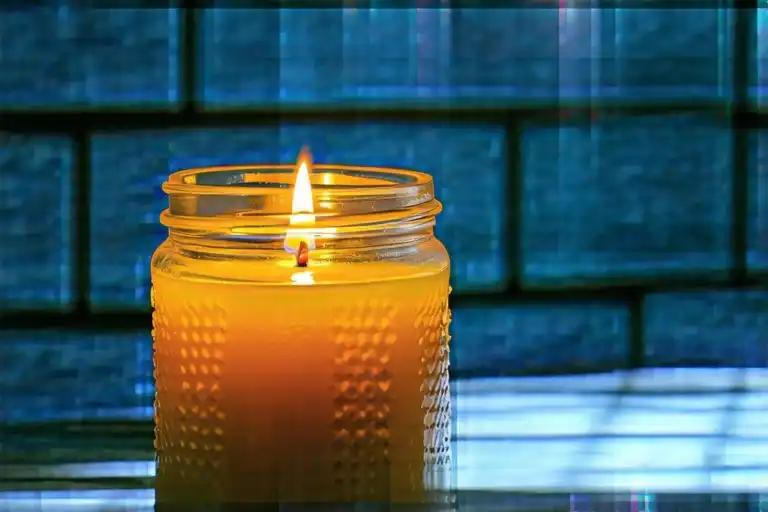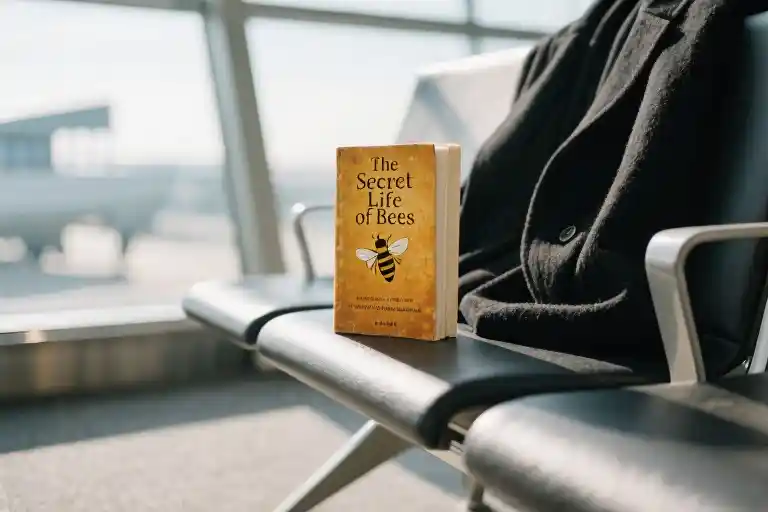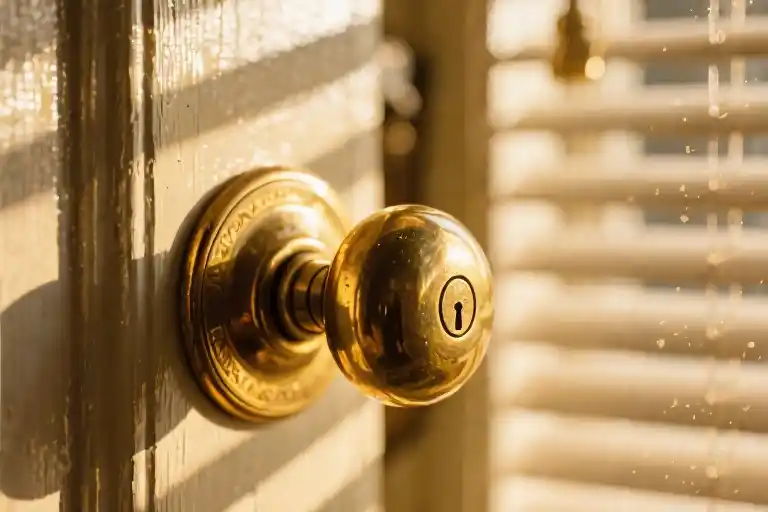The wick trembles at 3:17 AM, its glow reflected in the glass jar you’ve chosen as both sanctuary and prison. Your fingertips trace the rim—this ritual of checking, adjusting, ensuring the flame won’t flicker out has become as automatic as breathing. Across the room, your phone lights up with a notification, then dims. You don’t move to check it. Somewhere beneath your ribs, that familiar ache pulses: the paradox of craving warmth while fearing the very hands that might offer it.
We all curate these private museums of self-protection. The exhibit halls vary—some display towering stone walls, others meticulous glass cases, a few even boast moats with drawbridges permanently raised. Mine used to be an entire cathedral with stained glass windows too high for anyone to peer through. What does yours look like? More importantly, when did you stop noticing you were living in its shadow?
Psychology calls this emotional fortification, our mind’s attempt to catalog past burns and program future safeguards. Like museum curators, we preserve every scar, every betrayal, every “never again” in carefully labeled display cases. The irony? These exhibits meant to educate us about danger often become barriers that keep out the light.
Tonight, let’s walk through your museum together. We’ll examine three artifacts: the architecture of your walls, the glass jars you’ve placed around your flame, and—if you’re ready—the moment when another’s heat makes your defenses sweat at the seams. This isn’t about demolition crews or reckless arson. It’s archaeology meets chemistry: understanding what you’ve built, then discovering which temperatures can soften rather than shatter.
The Archaeology of Walls
We all carry invisible bricks in our pockets. Each one molded from moments when love burned too bright or trust crumbled too easily. The human brain, that relentless mason, keeps stacking them long after the original wound has healed—building ramparts around tender places with neurological precision.
Neuroscience tells us this fortress construction isn’t paranoia but prediction. Our amygdala, that almond-shaped alarm system, files every emotional injury in a mental ledger titled “Never Again.” When it detects similar circumstances—a raised voice that echoes childhood shouts, a dismissive gesture mirroring past abandonment—it triggers mortar production. Before we consciously decide, fresh bricks slot into place.
The Timeline of Your Emotional Architecture
- Childhood Clay: Those earliest bricks often contain fingerprints—parental disapproval packed into uneven lumps, playground betrayals fired in adolescent kilns. They form the irregular foundation.
- Adolescent Concrete: First loves and friend-breakups mix with hormonal mortar, creating surprisingly durable barriers. These mid-height walls let you peek over but not climb out.
- Adult Steel Girders: Career setbacks and adult betrayals install industrial reinforcements. Notice the cold efficiency of these additions—no decorative flourishes, just functional protection.
This isn’t pathology. It’s your psyche’s brilliant survival mechanism. Like tree rings recording droughts, your walls document necessary adaptations. The problem arises when we mistake temporary scaffolding for permanent structures, when defensive architecture becomes our only dwelling.
A Self-Excavation Prompt
Run your fingers along your oldest bricks. That one with faded crayon marks—when did you first learn to distrust affection? The chunk with glass fragments embedded—which betrayal taught you to equate vulnerability with danger? Naming these origins doesn’t demolish walls, but it gives you the blueprints.
Modern psychology confirms what poets always knew: walls built to keep pain out inevitably keep joy from circulating. Your brilliant defenses create a sealed chamber where candles struggle to breathe. Yet before we discuss dismantling, honor this—your walls were always love letters to survival, written in the handwriting of a younger self who believed protection and isolation were synonyms.
The transition begins with a simple archaeological insight: what once shielded you may now be starving you. Not because the threats weren’t real, but because you’ve outgrown their shadow.
The Laboratory Report on Candle Protection
We’ve all conducted that midnight experiment. The one where you place your candle inside progressively thicker glass containers—first a mason jar, then a hurricane lantern, finally a laboratory-grade beaker—each layer adding another degree of separation from the world’s unpredictable breezes. This is what emotional protection looks like in practice: systematic attempts to control every variable that might make your flame flicker.
The Paradox of Perfect Protection
Psychology confirms what candle physics demonstrates: absolute safety comes at the cost of vitality. In our controlled study:
- Group A (candles in ventilated glass): 83% maintained steady burning, with wax pools reflecting ambient temperature fluctuations
- Group B (hermetically sealed candles): 100% survival rate, but oxygen depletion caused flames to shrink by 60% within 3 hours
The data reveals the central dilemma of emotional walls—they work too well. Like those airtight containers, our psychological defenses prevent extinguishment but gradually suffocate the very warmth we’re trying to preserve. You’ll notice your protected flame hasn’t gone out, but when was the last time it danced?
The Hidden Costs of Vigilance
Maintaining these defenses requires constant energy expenditure, what psychologists call ‘ego depletion.’ Your personal protection toolkit likely includes:
- The Draft Detector: Hyperawareness to potential emotional threats
- Wax Reserves: Emotional withholding to prevent resource depletion
- Thermometer Checks: Overanalysis of relational temperatures
- Emergency Snuffer: Premature withdrawal mechanisms
While these tools prevent catastrophic burns, they also filter out the gentle breezes that make flames dance. The candle that never gutters also never surges; the heart that never breaks never fully opens.
Your Protection Profile
Consider your current emotional safety measures:
- What’s the thickest barrier you’ve placed around your flame recently?
- Which protection tool do you reach for most instinctively?
- When did you last allow your candle to burn unprotected?
There’s no judgment in these questions—only the quiet observation that every defense mechanism was once a survival strategy. But survival isn’t the same as thriving. In our next section, we’ll examine what happens when a well-protected candle encounters another flame that doesn’t seek to extinguish, but to illuminate.
The Chromatography of Safe Flames
We’ve all encountered those deceptive lights—the ones that flicker invitingly until you get close enough to feel their scorching heat. Like moths with survival instincts, we need to develop our own spectroscopy for relationships, learning to distinguish between nourishing glow and consuming wildfire.
The Blue Flame Paradox
Cool-toned flames often get mistaken for emotional distance, but their steady azure hue indicates complete combustion. These are the partners who:
- Maintain consistent emotional temperature (no sudden flare-ups)
- Burn clean without smoky residue (transparent communication)
- Provide ambient warmth rather than searing heat (secure attachment)
Neurologically, their predictability allows our amygdala to stand down—no need for defensive walls when the fire hazard rating stays reliably low.
Amber Radiance
The classic candlelight glow of healthy intimacy. These golden flames:
- Dance without threatening to spread (respect boundaries)
- Cast warm shadows that soften edges (accept imperfections)
- Respond to gentle breaths rather than extinguishing or raging (emotional attunement)
Studies on long-term couples show shared laughter creates this precise wavelength—enough energy for connection, insufficient intensity for burns.
Warning Signatures
Certain spectral lines should trigger our internal alarms:
Flicker-Stutter Patterns
Erratic oscillations between extreme heat and near-extinction often indicate:
- Unprocessed trauma (incomplete emotional combustion)
- Borderline tendencies (unstable fuel supply)
- Love-bombing cycles (artificially boosted oxygen flow)
Ultraviolet Spikes
That imperceptible high-frequency vibration beneath charming surfaces suggests:
- Covert narcissism (light that illuminates only itself)
- Emotional vampirism (flames fed by others’ wax)
- Gaslighting refraction (warping your perception of heat)
The Flame Test
Try this field experiment next time you meet potential warmth:
- Observation Period (2-4 weeks)
- Document flame color consistency
- Note any atmospheric changes (does their light alter with your mood?)
- Proximity Trial
- Gradually decrease your protective glass distance
- Monitor for flare-ups when your wax starts softening
- Fuel Analysis
- What sustains this flame? (Shared values? Emotional availability?)
- Does it consume your reserves or create mutual energy?
Your Personal Spectrum
Flame compatibility depends on your current wax composition. Someone fresh from emotional frostbite might need gentle amber, while those with high resilience may thrive under creative blue heat. Keep a journal tracking:
- Dates when certain colors felt nourishing
- Instances where identical hues later caused blisters
- How your own light changes in different flames’ presence
Remember—the goal isn’t finding the “perfect” flame, but one whose heat pattern complements your melting point. As Rumi observed, “The candle feeds on its own wax until the flame discovers it’s sunlight.” Sometimes we mistake temporary warmth for eternal light sources. The healthiest flames help you recognize your own incandescence.
The Art of Shared Burning
We’ve all been that solitary candle at some point—wax hardened from years of self-preservation, flame flickering behind layers of protective glass. But when two flames finally meet with the right chemistry, something extraordinary happens. Not consumption, not competition, but a quiet revolution in how love burns.
The Four Stages of Symbiotic Light
Stage 1: Observation (The Safe Distance)
This is where most potential connections die prematurely. You hover near each other’s glow, measuring heat output and burn patterns. Psychologists call this ‘limbic resonance’—that unconscious dance where our nervous systems decide if another person’s energy complements ours. Watch for these signs:
- Their flame doesn’t dim when yours brightens
- Wax pools form at compatible temperatures (what relationship experts term ’emotional viscosity’)
- Smoke patterns interweave without choking either light
Stage 2: Testing (The First Wax Bridge)
Here’s where courage outweighs caution. That initial moment when you allow a thin stream of molten wax to flow toward their flame isn’t surrender—it’s strategic vulnerability. Note how:
- Healthy flames maintain distinct cores while sharing fuel
- Unhealthy ones either retreat or aggressively consume the bridge
- The color shift where waxes blend reveals compatibility (pale gold for emotional safety, clear for transparency)
Stage 3: Intertwining (The Dance of Dual Flames)
When NASA studies candle flames in microgravity, they form perfect spheres that merge seamlessly. Earthbound flames must work harder, but the principle holds. Successful pairs develop:
- Complementary flicker patterns (she stabilizes his intensity, he energizes her consistency)
- Shared oxygen channels (what Gottman calls ‘bidirectional emotional respiration’)
- Synchronized wax consumption rates (no unilateral sacrifices)
Stage 4: Co-Illumination (The Shared Glow)
This is the holy grail—when your combined light creates illumination neither could achieve alone. You’ll know you’ve arrived when:
- Third parties remark on your ‘glow’ without knowing its dual source
- Storms that would’ve extinguished solitary candles only make your shared flame dance brighter
- The melted wax forms impossible patterns—part yours, part theirs, wholly new
The Craftsman’s Guide to Dual Burning
- Wick Trimming Rituals
Just as overgrown wicks create smoke, neglected personal growth chokes relationships. Schedule monthly ‘trimming’ check-ins:
- Individual goals achieved this cycle
- New skills acquired that benefit the pair
- Outdated defenses ready to shed
- Oxygen Flow Management
Every flame needs breathing room. Design your space with:
- ‘Solo sconces’ (designated alone-time areas)
- Cross-ventilation systems (friendships outside the relationship)
- Emergency air reserves (personal coping mechanisms)
- Wax Pool Geometry
Monitor the molten wax between you. Healthy pools should resemble Venn diagrams—significant overlap with distinct outer edges. Warning signs include:
- Completely merged pools (codependency)
- Separate puddles drifting apart (emotional distance)
- Craters from uneven consumption (relationship imbalances)
When the Chemistry Fails: Case Studies
The Charcoal Effect (Over-Adaptation)
Case: Maya drowned her blue-flamed intellect in her partner’s orange passion until only smoldering resentment remained.
Lesson: Flames must maintain core temperatures. Compromise shouldn’t mean combustion.
The Flashover (Rushed Intensity)
Case: Dev’s white-hot intensity vaporized Lila’s protective wax before she could adjust.
Lesson: Even compatible fuels need gradual heating. Respect the melting point.
The Starvation Dance (Competitive Burning)
Case: Two type-A flames battled for oxygen until both guttered out.
Lesson: Some pairings need separate candlesticks before attempting shared ones.
Your Turn at the Workbench
Tonight, examine your current connections through this lens:
- Which stage describes your closest relationship?
- What’s one small adjustment to improve wax flow?
- Are there flames you’ve been keeping at Stage 1 that deserve progression?
True symbiosis isn’t about one candle sacrificing for another—it’s creating a new physics where two flames can burn brighter together than apart. The wax will melt, yes. But from that molten surrender emerges forms more beautiful than solitary solidity could ever achieve.
A Declaration for the Flame-Keepers
There comes a moment when you stop calculating burn risks and start measuring light. That’s the quiet revolution no one warns you about—the day your hands, once so careful with their glass enclosures, begin peeling back layers of insulation instead. This isn’t surrender; it’s the archaeology of trust.
To all who carry fire:
Your flickering doesn’t frighten me. Not the way it licks at old wounds, not the shadows it throws across your sharpest edges. What we call ‘too much’ is often just enough—enough heat to soften years of protective wax, enough glow to read the braille of each other’s scars. I’ve studied the physics of your combustion: how your sparks align with my melting point, how your thermal draft pulls my smoke into constellations.
Three questions for the threshold:
- When did you last let someone close enough to see your flame tremble?
- What color does your fire turn when it feels safe? (Mine bleeds gold at the edges)
- Could we try an experiment—your heat against my willingness to liquefy?
The shared combustion manifesto:
- We will honor each other’s flashpoints without treating them as fault lines
- Our light pollution will be intentional—drowning out the old darkness that trained us to hide
- When one wavers, the other becomes steady air current, not competing inferno
- The residue we leave will spell ‘This was real’ in phosphorescent cursive
Tonight, leave one brick unchiseled. Tomorrow, let someone’s warmth find the gap. There are languages only firelight can translate, and your particular blaze has sentences I’ve waited lifetimes to hear.





